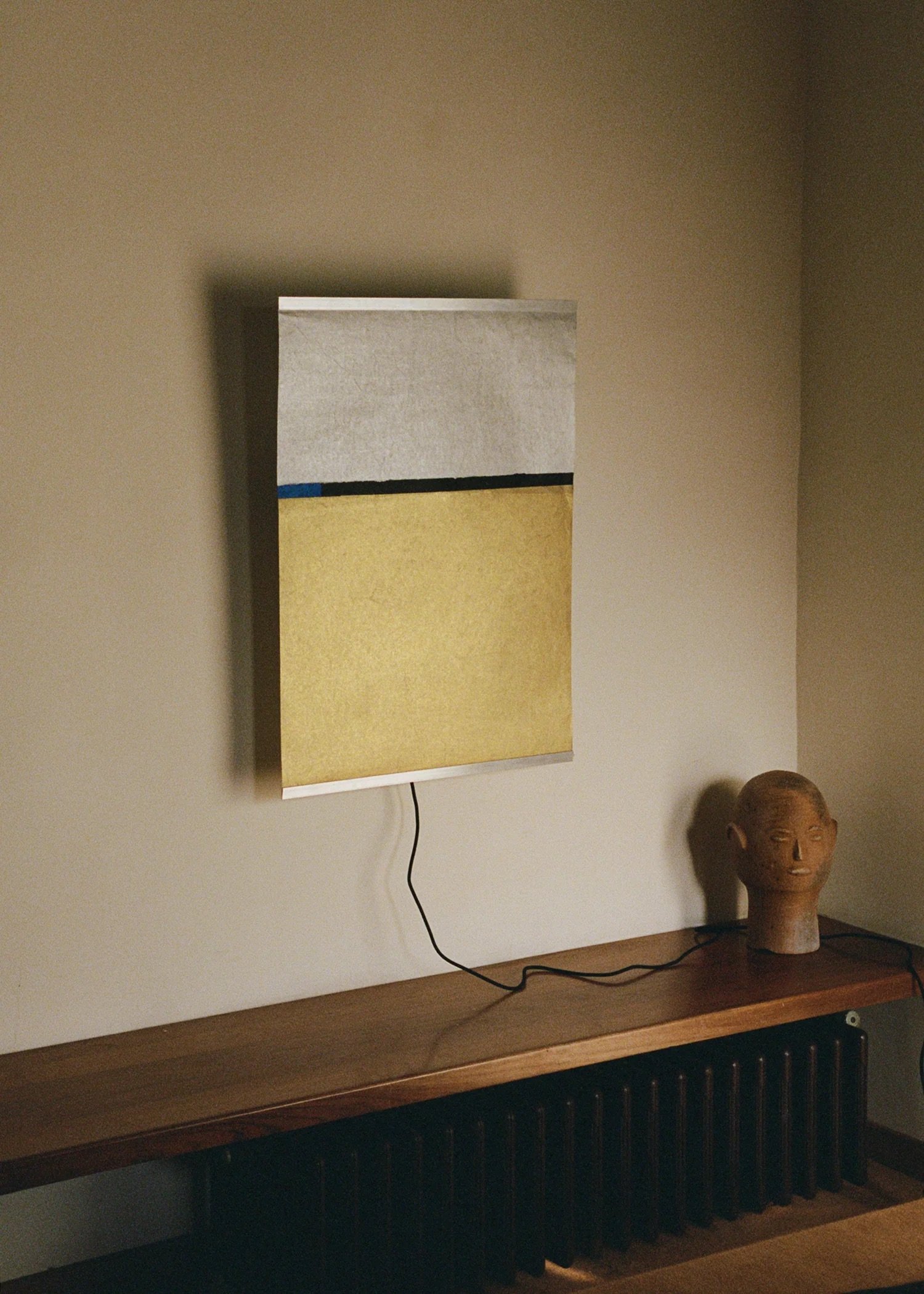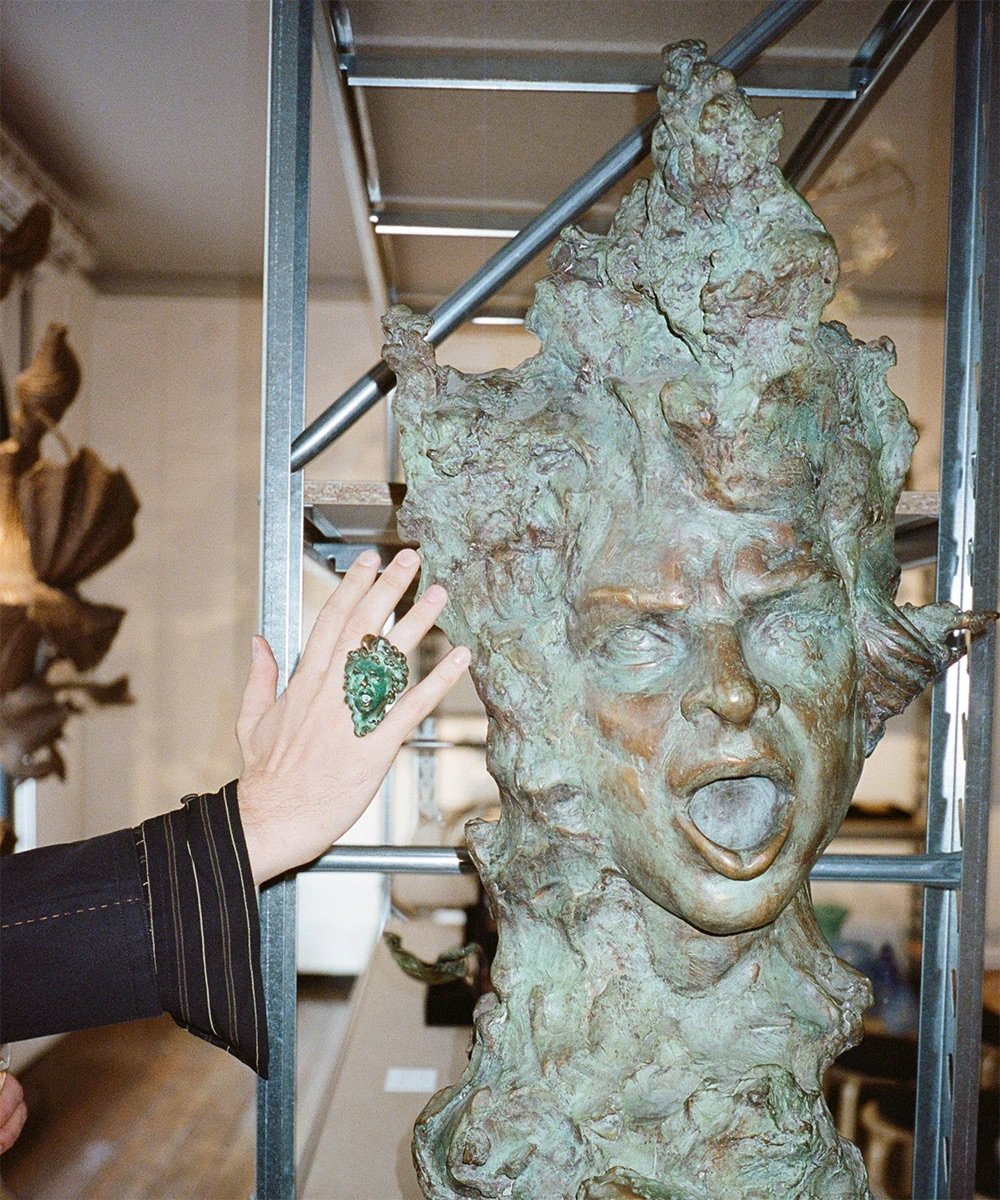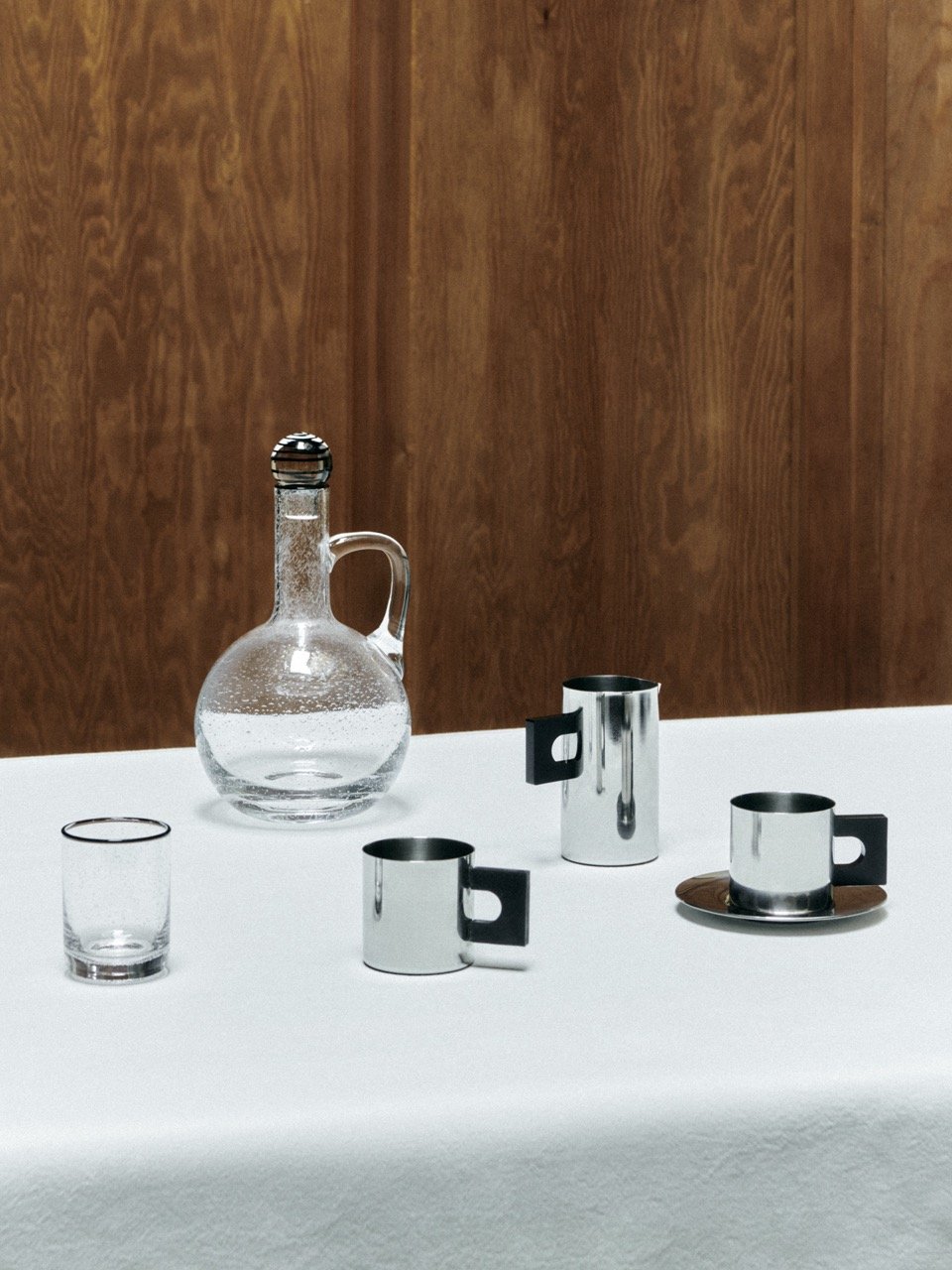Is 3daysofdesign the New Salone?
Courtesy of &Tradition
Is 3daysofdesign the New Salone?
HURS asked a select group of creatives, artists, designers and brands how the culture of Copenhagen facilitates creativity, their thoughts on 3daysofdesign and what the purpose of design fairs is today.
By Bonnie Langedijk
It’s no surprise Copenhagen has become the capital of Scandinavian design. Known for its wide array of iconic designers and brands – from Arne Jacobsen, Hans Wegner and Nanna Ditzel to Kvadrat, HAY and Fritz Hansen – Denmark has remained a hub of creativity — from food to design to sustainability and fashion. With 3daysofdesign – a 3-day fair focused on creativity and innovation across design – Copenhagen has further cemented itself as one of the key design destinations. Under the leadership of Managing Director Signe Byrdal Terenziani the fair has evolved into a cultural event with international cachet.
The Copenhagen Effect
While other Scandinavian countries offer the same level of credibility and talent in the design space, none have been able to crystallize their position on the international stage quite like the Danes have. Native Louise Roe, founder of the eponymous interior design brand and gallery, believes the freedom to pursue dreams and passions is fundamental. “Our open-minded and inclusive culture allows individuals to express themselves and occupy space freely. The democratic environment empowers the youth to unleash their creativity, and the flexible regulatory framework fosters innovation. This combination of freedom, youthful energy, and supportive policies creates an ideal setting for new ideas to thrive,” she shared. While not based in Copenhagen, Los Angeles-based designer Jacqueline Rabun has a similar experience. Rabun has worked in Denmark for years, designing some of the most iconic collections for Danish house Georg Jensen. “Copenhagen has always been a city of design excellence, the energy and the gentle way of life allows one to dream and explore new ideas.” Orit Elhanati, who has collaborated with Conie Valesse and Khaite, and is the founder of Elhanati, shares Rabun’s sentiment. “The city’s clean lines and orderly lifestyle create a stable canvas. Living here, the city invites us to break free of these lines, as we are fortunate enough to have this balanced way of living. It's about creating things with a story that are practical yet deeply connected to everyday life, whether that is art, food, jewelry, or design,” she shared. Having spent quite some time in the Danish capital myself, there’s simply a deeper understanding of how to live well. From the ease of cycling across the city, to the care that’s put into the architecture and design of the city – even 7Eleven is chic here. To those visiting from cities like London, New York or Paris, the perfection of it all might seem a bit daunting. Bonnie Hvillum, Director of Natural Material Studio, who works and lives in Copenhagen, sees the duality of the city. “It’s a very simple, easy and convenient place to live. We have great childcare, welfare and support systems. But sometimes it feels like a safe, small micro-cosmos. It’s important that we really consider this perspective and use this ’surplus’ to take the responsibility of improving the world,” she shared with HURS.
'RESILIENCE', a showcase during 3DaysOfDesign that brought together the work of Natalia Criado, Danielle Siggerud, Susanne Storm and Knothouse.
Tekla’s collaboration with renowned furniture company Artek.
Creating Intimacy at Scale
The 2024 edition of 3daysofdesign was its most extensive one to date. The programme – which has grown from over 250 brands in 2023 to over 400 exhibitors in 2024 – included exhibitions, design talks, networking events and dinners across various venues throughout the Danish capital. Louise Roe has seen the size of the fair change remarkably. “Over the past few years the fair has grown significantly, evolving into a must-see event that draws international attention. It's become a major highlight on the design calendar, creating a vibrant atmosphere and a sense of anticipation and FOMO among attendees. It’s thrilling to see so many people becoming passionate about design,” she shared. While the schedule is packed - some might say too much so – the ease with which you get from one place to the next combined with the buzzy yet relaxed atmosphere across the city make it an event that’s functional yet truly enjoyable. “The ease of moving around from exhibition to exhibition, while still having a list of the things I most wanted to see, made for a relaxed visit. Often design fairs feel overwhelming and frenetic with an undercurrent of FOMO, but this one had so many things happening at the same time, I was forced to go with the flow and see what I could,” first time attendee Jennifer Pastore, Visual Director of Sotheby’s Magazine and creative consultant, shared.
Bridging the Old and the New
The calendar was dominated by events and exhibitions highlighting singular brands, with some leaning into their heritage and historical designs while others focused on innovation and newness. But the strongest showcases managed to bridge the traditional and the contemporary. Homeware and lifestyle brand Tekla embraced its Scandinavian roots by working with renowned furniture company Artek, celebrating the legacy of Aino Aalto. While the brands looked to the past, the collaboration – a collection of duvet covers with a cherry blossom “kirsikankukka” print – felt refreshingly modern. The conversation between the brands’ Managing Director’s Kristoffer Juhl and Marianne Goebl hosted at the Tekla store in the heart of Copenhagen, further added to the storytelling behind the collection. Adding a layer of intention and reasoning needed to truly understand the larger why. The Griegst archive installation curated by MATTER and SHAPE delivered an equally interesting dialogue between old and new, showcasing monumental pieces from Arje Griegst’s catalog of homeware and artworks including pieces the house is so well known for alongside previously unseen objects.
“The STRONGEST showcases managed to bridge the traditional and the contemporary.”
Embracing International Talent
While Denmark is known for its many iconic furniture designers and brands – of which many were present – 3daysofdesign wasn’t just about celebrating the Scandi’s. “Throughout the years, we've seen a more international crowd in the city - something we've really felt these past few days. There is an elevated interest in high-quality, timeless pieces with bespoke craftsmanship at the center,” Elhanati founder Orit Elhanati told HURS. Danish multidisciplinary brand FRAMA collaborated with British designer Faye Toogood, delivering an interesting contrast through tactile, colorful sculptures placed in the Danish brand’s historical space from 1878. Visitors could also explore FRAMA and Toogood’s capsule collection exploring the intersection of art, design, food, and people. Meanwhile, fashion house Saks Potts collaborated with Paris-based designer Аna Kraš on a 6-piece capsule featuring a wardrobe of mesh pieces (we’re still thinking about the bedazzled panties). Kraš also showcased a selection of furniture, lighting pieces and other home objects from her recently launched brand Teget, which had a distinct style and delivered a refreshingly new aesthetic take on design today. “Although we were not part of the official calendar for 3daysofdesign, we were happy that Ana’s exhibition was planned for the same week as we got the opportunity to create a lot of traffic at the show. Ana is a long time friend of ours and we absolutely love her Teget universe and wanted to collaborate with her. The exhibition was made in two parts. One room was filled with Ana’s own art pieces, furniture and objects from Teget. In the store we presented our collaborative collection consisting of 6 pieces made from mesh fabrics in navy, brown and black with small crystals applied on all of the styles,” Cathrine Saks and Barbara Potts, the duo behind Saks Potts explained. Milan-based designer Natalia Criado – known for her jewelry-inspired tableware and kitchen accessories crafted from brass, glass and gemstones – showcased her standout collection of everyday objects in group exhibition ‘RESILIENCE’ alongside Danish architect designer Danielle Siggerud, artist Susanne Storm and rug studio and store Knothouse. “As a first-time attendee, I've heard that 3daysofdesign has grown significantly, becoming a dynamic event with numerous high-level exhibitions and activities. It combines elements of design, food, and fashion, creating a comprehensive experience . The fair's evolution over the years highlights its increasing importance in the design world, attracting a diverse audience and fostering networking opportunities,” Criado said.
Аna Kraš’ lighting piece from her recently launched brand Teget, showcased at the Saks Potts store.
An exhibition at Griegst, curated by MATTER and SHAPE.
The Potential for Greatness
It’s clear there’s huge potential for the Danish fair that started out with only four brands back in 2013. Fairs have become key events on the cultural calendar — whether that’s Salone del Mobile, Frieze or Art Basel – and it seems there’s an insatiable hunger for more. With the impressive level of brands and designers participating combined with the charm of the Danish capital, 3daysofdesign has all the ingredients to become an addition to the existing line up. Cathrine Saks and Barbara Potts from fashion house Saks Potts agree, “Over the past few days, many people talked about 3daysofdesign potentially becoming one of the largest design fairs. Scandinavian design aesthetics have always been different from other cultures. It is a clean aesthetic that attracts and inspires all over the world, but is never the same anywhere else than here. A combination of our Scandinavian design heritage and our open mindedness to new aesthetics makes 3daysofdesign something special.” But what can set this fair apart from others, and how can it play into the constantly evolving purpose of design fairs today? “What sets it apart is its ability to blend Danish design heritage with international influences. Its intimate scale, combined with the high quality of exhibitors and events, makes it a distinctive and influential destination. We exhibited our cutlery during Salone del Mobile in Villa Bossani, a magical place that inspired the design of the boutique here in Copenhagen. However, the feeling you get there is completely different from the charming and intimate setting we have here in Copenhagen,” Orit Elhanati said. The immerse nature of 3daysofdesign also makes it a much more inspiring event compared to most traditional fairs. “At 3days[ofdesign] you get to present an installation within the authentic context of your own showroom. This allows visitors to fully grasp your brand's DNA and aesthetic in a way that's impossible at conventional fairs. The rise of concept stores shifts design fairs toward fostering deep, meaningful connections rather than mere exhibition. Traditional fairs are also less sustainable, requiring you to transport your collection, conflicting with the greener movement,” Louise Roe shared. Next to the freedom of exhibiting in your space of choice, the city-wide nature of 3daysofdesign also allows visitors to explore more than simply those participating in the fair. It becomes an event that captures not only the best of design, but also the wider atmosphere of the city.
A Melting Pot of Disciplines
And there are few cities that have cultivated a culture where creative disciplines seamlessly integrate and that fosters collaboration across them too. Throughout its programming 3daysofdesign has been able to capture that spirit that’s unique to the Danish capital. From HAY’s collaboration with Italian Bistro LOCALE21 and sneaker brand Asics to Kvadrat’s collaboration with Marimekko and &Tradition’s Little Petra cafe. “We have a strong collaborative mindset instead of a competitive one, meaning we live, work and create in a ’safe space’ where we can trust and nurture from our network and colleagues. I think this is super healthy for creativity to thrive,” Hvillum shared. “There is also a close community here, where we support each other and share knowledge, which makes it quite special here in comparison to large design hubs,” Elhanati said.
Natural Material Studio’s ideological installation ‘White Utopia’ unveiling an investigation of domestic living when designing for fluidity - a philosophy by the studio for a world in flux using the studio’s own bio-based materials.
Louise Roe’s tableware pieces.
Opportunities and pitfalls
And while 3daysofdesign delivers in more ways than one, there’s also room for improvement and growth. “If 3daysofdesign can maintain its focus and not get too unwieldy both in scope and in how it engages with the physical landscape of Copenhagen, in terms of staying in an easily navigable area of the city, then I think it can really stand out as a pleasurable fair to attend. A challenge will be how to maintain freshness and innovation with some of the Danish heritage brands as they exhibit year after year, but the balance of new Danish and international brands, along with these brand classics makes for an interesting dynamic. I also noticed a lot of emphasis on innovation and sustainability in terms of materials which is very exciting but can be challenging to digest as a fair attendee. This focus could be an area of opportunity in terms of what the fair focuses on, also in collaboration with the heritage brands,” Jennifer Pastore shared. “We have the opportunity to foster cross-disciplinarity even more so as a platform for architects, scientists, artists, manufacturers and designers to come together around some of the complex challenges of today. I think the most important thing is that we dare to disagree and have courage to challenge each other. I see often with these fairs that we want the showrooms, exhibitions and talks to be nice, beautiful and simple to make us feel at ease. However, the electric energy and inspiration seems to happen when we are faced with things that challenge and push us, and where the challenging dialogues and discussions are facilitated with the aim of learning from each other. This is where both speakers, exhibitors and the audience walk away with something more than when they came,” Bonnie Hvillum of Natural Material Studio added.










